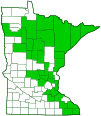Short-stemmed Russula
(Russula brevipes)
Conservation • Description • Habitat • Ecology • Distribution • Taxonomy
Conservation Status |
|
|||||||
| IUCN Red List | not listed |
|||||||
| NatureServe | NNR - Unranked |
|||||||
| Minnesota | not listed |
|||||||
Description |
||
Short-stemmed Russula, also called Stubby Brittlegill, is a common, easily recognized, medium-sized to large, brittlegill mushroom. It occurs in North America and Central America. It occurs throughout the continental United States but is mostly absent from the Great Plains and the Great Basin. It is found in summer and fall in deciduous, coniferous, and mixed woodlands. It grows on the ground, alone, scattered, or in loose groups (gregarious) or close groups (troops), but not clustered. It has a mutually beneficial relationship (mycorrhizal) with the tiny rootlets of trees, absorbing sugars and amino acids while helping the tree absorb water. Short-stemmed Russula, and other large white species of Lactarius and Russula, are often parasitized by the fungus Hypomyces lactifluorum. The resulting fruiting body is deformed and bright orange. In this form it is recorded as Lobster Mushroom because the species of the deformed host cannot be determined. When it first appears, the cap is white, whitish, or creamy white, broadly convex, and depressed in the center. The margins are rolled under. As the cap ages it spreads out, becoming broadly convex, the margins straighten, and it develops yellowish to brownish stains and discolorations. The mature cap is shallowly vase shaped. The margins are straight or somewhat rolled under, and they are not lined. The upper surface is dry and may be covered with minute hairs, suede-like. The cap is often dirty and sometimes appears as a low mound in the humus. Older caps are sometimes entirely brownish to orangish-brown. The gills are thin, closely spaced or crowded, and white or creamy white. They often develop brown stains with age. They are broadly attached to the stalk and may slightly run down the stalk. Between the long gills there are short gills that do not reach the stalk. The stalk is solid, hard, short, 13⁄16″ to 19⁄16″ (3 to 4 cm) long, and stout, ⅝″ to 13⁄16″ (1.5 to 3.0 cm) thick. It is whitish at first but usually develops brown stains and discolorations with age. It is more or less the same size from top to bottom, sometimes tapering slightly toward the bottom. The flesh is thick, brittle, and white. It does not change color when sliced. It is edible but usually mediocre. However, when parasitized by Hypomyces lactifluorum, it is highly rated. The spore print is white to cream colored. |
||
Similar Species |
||
Habitat and Hosts |
||
Deciduous, coniferous, and mixed woodlands |
||
Ecology |
||
Season |
||
Summer and fall |
||
Distribution |
||||
|
Sources |
|||
| 8/12/2023 | ||||
Occurrence |
||||
Common |
||||
Taxonomy |
|||
| Kingdom | Fungi (Fungi) | ||
| Subkingdom | Dikarya | ||
| Phylum | Basidiomycota (Basidiomycete Fungi) | ||
| Subphylum | Agaricomycotina (Higher Basidiomycetes) | ||
| Class | Agaricomycetes (Mushrooms, Bracket Fungi, Puffballs, and Allies) | ||
| Subclass | Agaricomycetidae | ||
| Order | Russulales | ||
| Family | Russulaceae (milkcaps, brittlegills, and allies) | ||
Genus |
Russula (brittlegills) | ||
Subgenus |
Brevipes | ||
The naming of this North American species has been a matter of confusion and disagreement for almost one hundred years. It was originally described as Russula brevipes in 1890. In 1938 it was described as Russula delica, but the description did not accurately match that European species. Mycobank considers it the same as the European species Russula chloroides and treats Russula brevipes as a synonym. North American mushrooms currently treated under the name Russula brevipes are highly variable in morphology and ecology. It is thought by some mycologists that they comprise a species complex of a few or even many distinct species. |
|||
Subordinate Taxa |
|||
Two varieties were described in 1964, Russula brevipes acrior and Russula brevipes megaspora. Index Fungorum does not recognize either, but treats them as synonyms. Mycobank lists both, along with the nominate variety Russula brevipes brevipes, as legitimate. |
|||
Synonyms |
|||
Lactarius chloroides Russula brevipes var. acrior Russula brevipes var. megaspora Russula delica var. chloroides Russula delica var. glaucophylla |
|||
Common Names |
|||
Short-stalked Russula Short-stem Russula Short-stemmed Russula |
|||
Glossary
Mycorrhizal
A symbiotic, usually beneficial relationship between a fungus and the tiny rootlets of a plant, usually a tree.
Visitor Photos |
|||||
Share your photo of this fungus. |
|||||
| This button not working for you? Simply email us at info@MinnesotaSeasons.com. Attach one or more photos and, if you like, a caption. |
|||||
Paul |
|||||
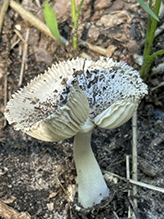 |
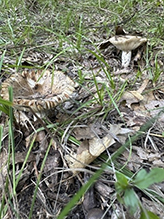 |
||||
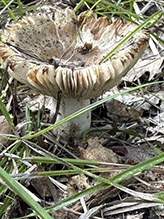 |
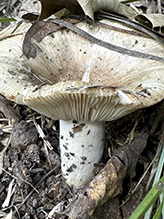 |
||||
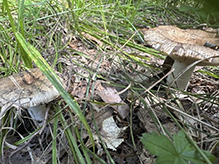 |
|||||
MinnesotaSeasons.com Photos |
|||||
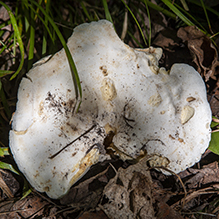 |
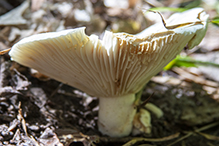 |
||||
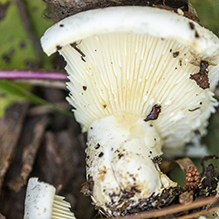 |
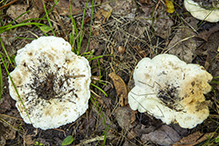 |
||||
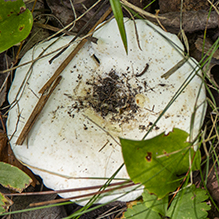 |
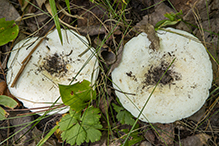 |
||||
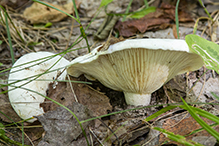 |
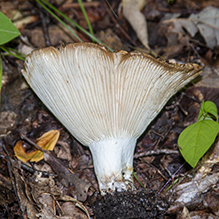 |
||||
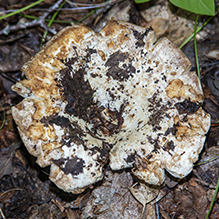 |
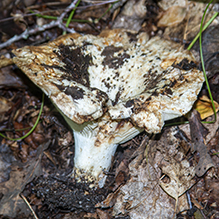 |
||||
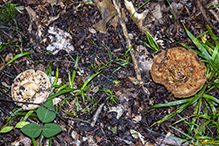 |
|||||

Slideshows |
||

Visitor Videos |
|||
Share your video of this fungus. |
|||
| This button not working for you? Simply email us at info@MinnesotaSeasons.com. Attach a video, a YouTube link, or a cloud storage link. |
|||
Other Videos |
|||
| Russula Brevipes host for hypomyces lactiflourumlobster mushroom Dave Deason |
|||
About
Sep 16, 2019 This video shows a russula brevipes in it's natural state, which is covered with forest duff. This is important because these are the mushrooms that become the host for lobster mushrooms( hypomyces lactiflourum). |
|||

Created: 8/13/2023
Last Updated:
